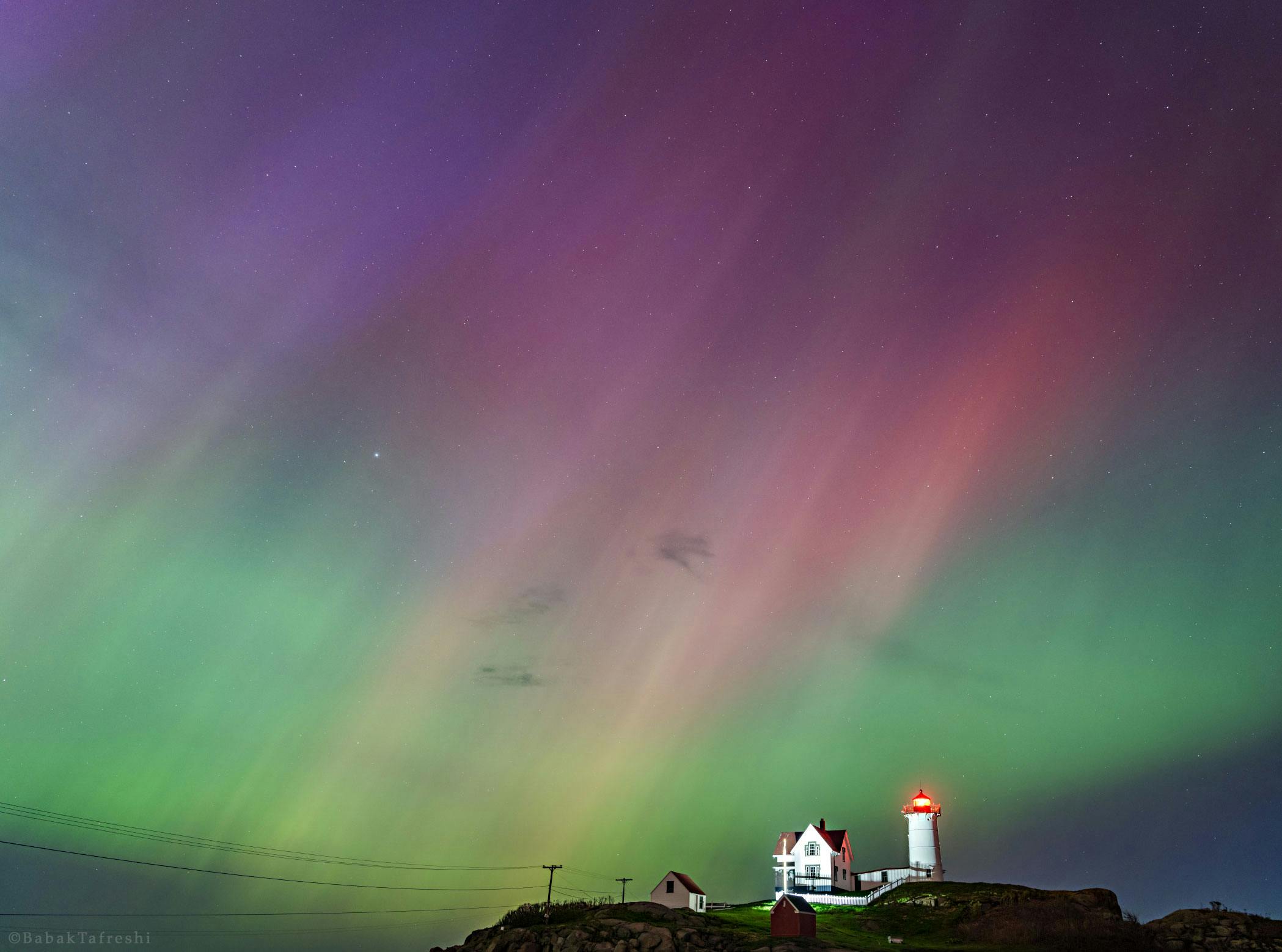
Geomagnetic Storm Creates Northern Lights Around the World
An extreme geomagnetic storm caused the Northern Lights to illuminate the sky across the world in the early hours of Saturday, May 11th. Given the storm and it's rare occurance, we can expect high visibility of Northern Lights in 2024!
Where Were the Northern Lights Visible?
The Northern Lights usually occur in the north and are visible on cold, dark, and clear nights. However, due to the storm, people in Southern Europe, the southern United States, Mexico, Iran, India, and other regions witnessed a historic display of the Northern Lights, which are rarely seen so far south on Earth. The Southern Lights (Aurora Australis) were also clearly visible from Australia and New Zealand.
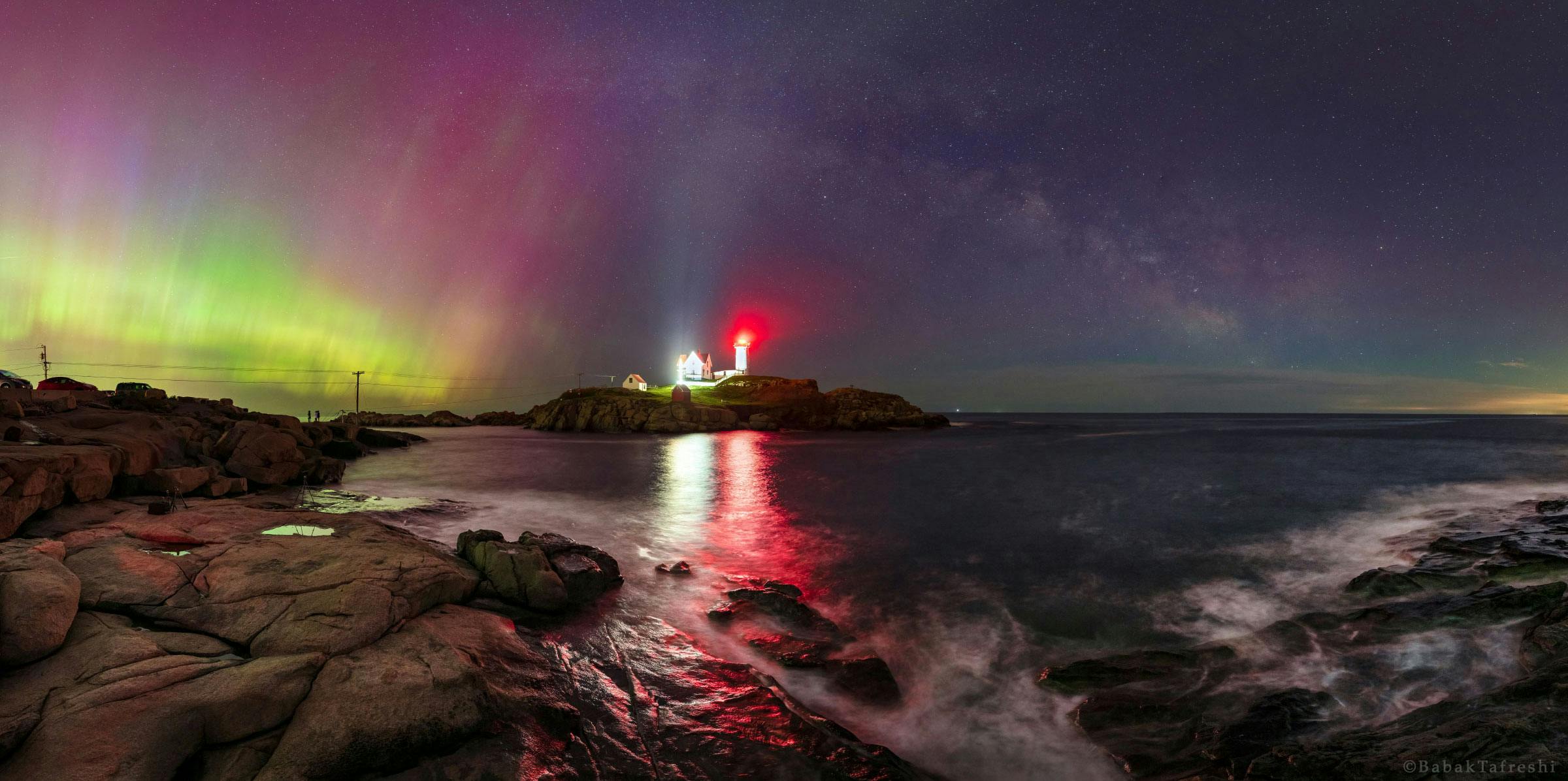
Photo taken by Babak Tafreshi.
What Actually Happened and Why?
The sun is approaching the peak of its eleven-year sunspot cycle. When the sun is at its most active, it is often covered in sunspots. Sunspots are active regions on the sun where the magnetic field is strong and tangled, preventing hotter material from rising. This area cools from 5600 degrees to about 4000 degrees. The temperature difference appears to us as a difference in brightness. The eleven-year solar cycle is expected to peak at the end of this year, around October.
In early May, a massive group of sunspots appeared on the side of the sun facing Earth. This group was about 17 times wider than Earth, the largest in this solar cycle that began in 2019. It was so large that it could be seen with the naked eye through solar eclipse glasses.
Since May 8, this sunspot group has caused several large and powerful eruptions that have sent magnetized plasma, or solar wind, hurtling towards Earth at a tremendous speed of over 1000 km/s.
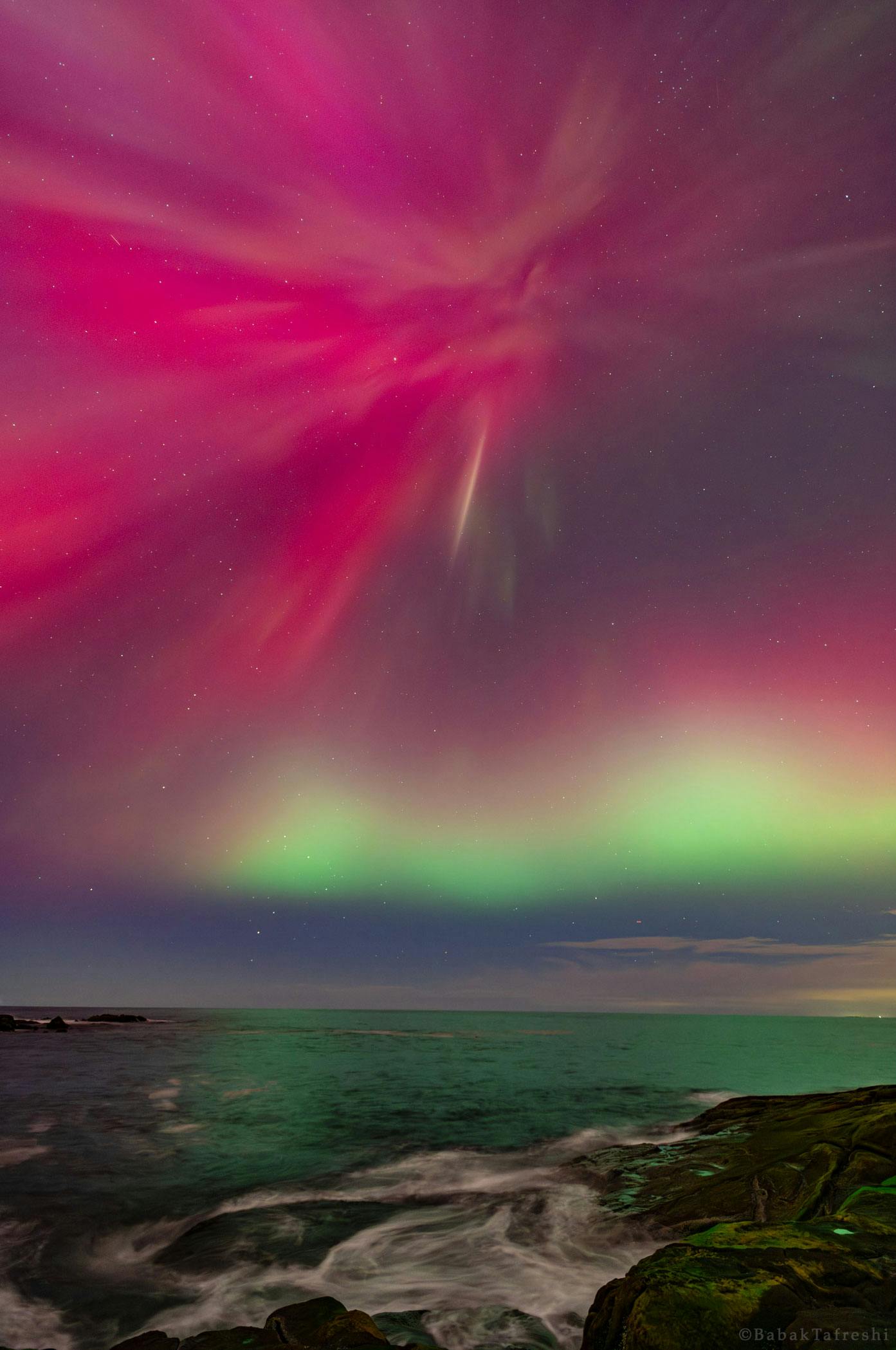
Photo taken by Babak Tafreshi.
Several bursts hit Earth nearly simultaneously, shaking up our magnetic field so violently that it resulted in the most intense geomagnetic storm in 21 years, since October/November 2003. The Kp index, which measures geomagnetic disturbances, reached its highest value of 9.
The magnetic field protects us from the solar storm, so it has no impact on us or other life forms. We don't notice anything unless we're lucky enough to have both darkness and a clear sky.
When solar wind particles rain down on Earth, some accelerate and travel along the magnetic field towards the polar regions on the night side of Earth. There, they collide with oxygen and nitrogen at about 80 to 400 km altitude. This excites or ionizes the gases, causing them to glow in different colors. This is how the Northern Lights are formed.
Typically, the Northern Lights are best seen from northern latitudes. For example, Iceland is almost always under the auroral oval, which means that the Northern Lights can be seen almost every night from there.
When geomagnetic storms occur, this oval expands and moves further south. In extreme cases, the oval expands so much that the Northern Lights can be seen as far south as the equator. This happened on the night of Friday, May 10th, 2024. Several bursts from the sun amplified each other, causing a powerful geomagnetic storm. The speed, strength, and direction of the solar wind were perfect for creating spectacular Northern Lights visible in many places.
Why Did the Northern Lights Appear Red and Purple?
Aurora colours depend on the altitude and the type of atoms and molecules that are ionised.
The highest auroras, between 200-400 km altitude, are caused by ionised oxygen atoms, which give off reddish or pinkish hues. Green Northern Lights form at lower altitudes, around 100 km, when oxygen molecules are excited. Even lower, around 80 km, ionised nitrogen creates violet or bluish light.
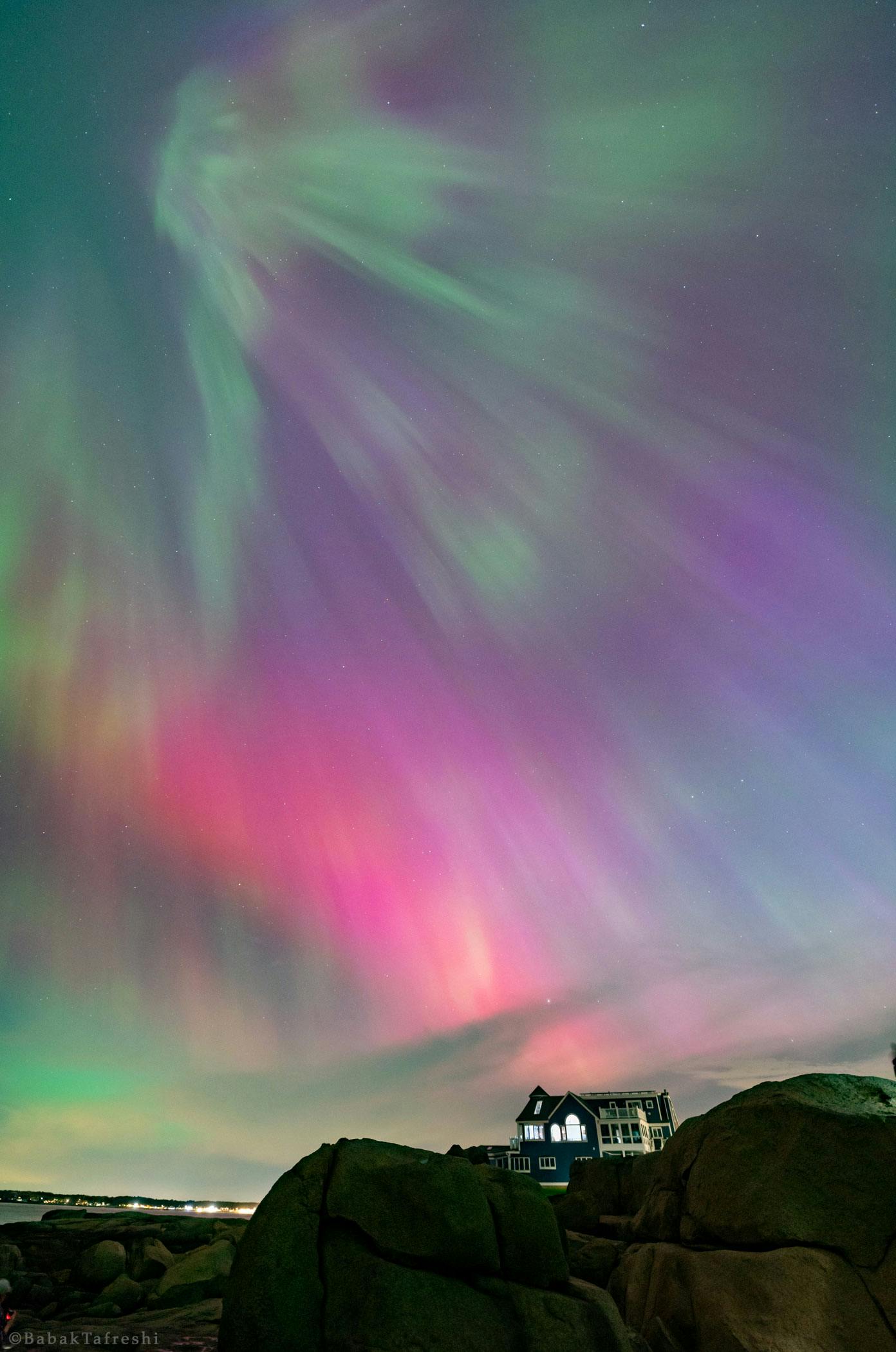
Photo taken by Babak Tafreshi.
The red lights from oxygen atoms are the highest and can be seen from further south due to Earth's curvature. This is why people living at lower latitudes saw the uppermost red part of the Northern Lights, making the images appear so pinkish.
To the naked eye, the display wasn't as colourful. At mid and low latitudes, even the strongest Northern Lights are dim and barely visible. At night, our eyes are almost color blind unless the light is very bright. Most people saw greyish Northern Lights in the sky, while cameras, which are more sensitive, captured all the colours.
A great place to see colourful auroras during a geomagnetic storm? Iceland!
How’s the Northern Lights Outlook for the Next Few Years?
The Sun is very active these days, which is great news for Northern Lights enthusiasts. If this activity continues, we can expect more geomagnetic storms over the next few months and years. Powerful geomagnetic storms are also common after the solar maximum.
Decades of observations show that the best years to see the Northern Lights are not during the solar maximum, but a year or two afterward. So, based on this, we can confidently say that the upcoming years will be even better for chasing the Northern Lights than 2024.
Experience the Northern Lights All Year Round
If you're fascinated by the recent spectacular displays of the Northern Lights and want to experience them in a unique way, visit the Northern Lights Show at Perlan.
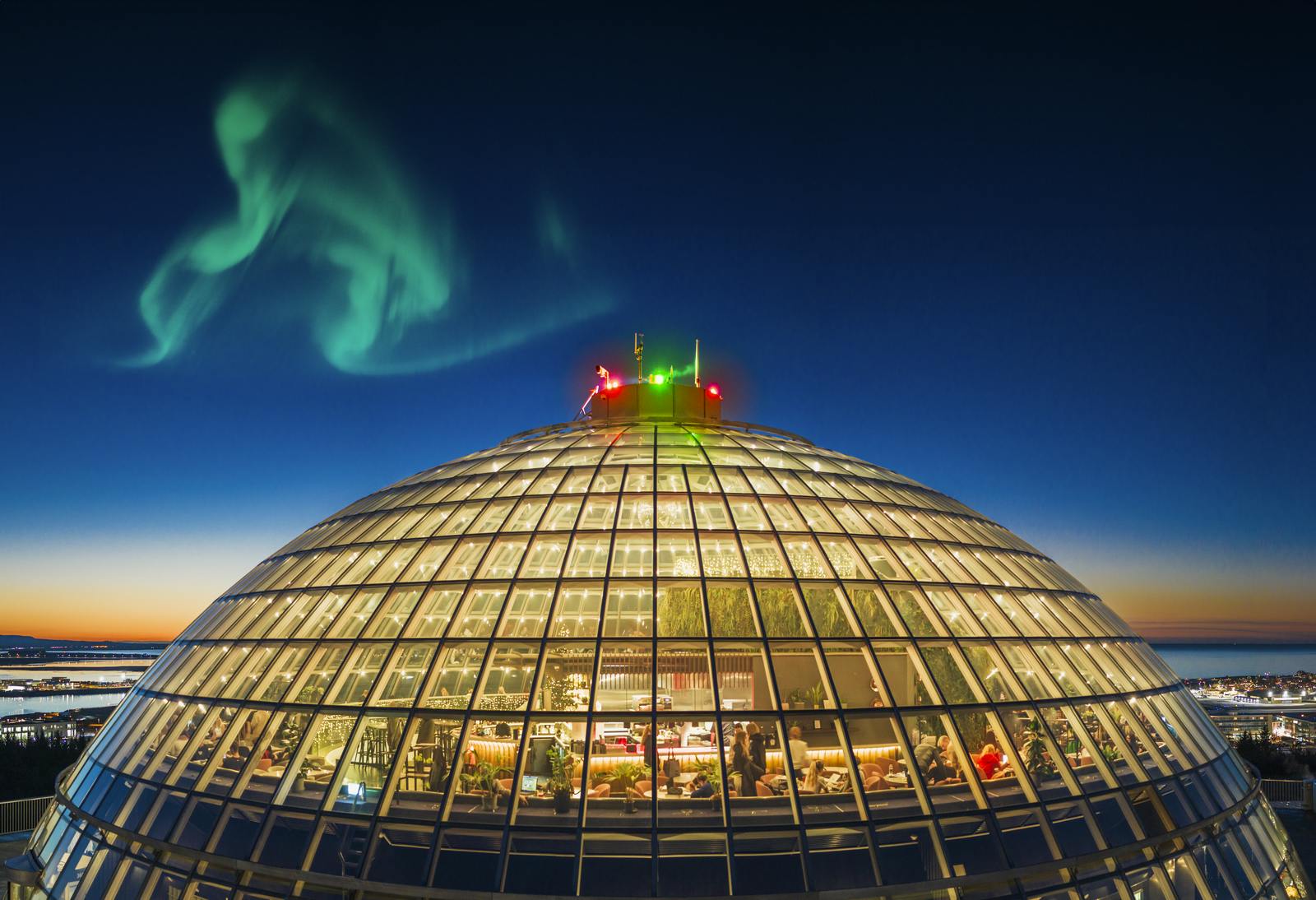
Located in Reykjavík, Iceland, Perlan offers an immersive exhibition that delves into the science behind the auroras and showcases stunning visual displays. Whether you’re planning a trip to see the Northern Lights in person or simply want to learn more about this natural wonder, the Northern Lights Show at Perlan is a must-see.
Popular articles
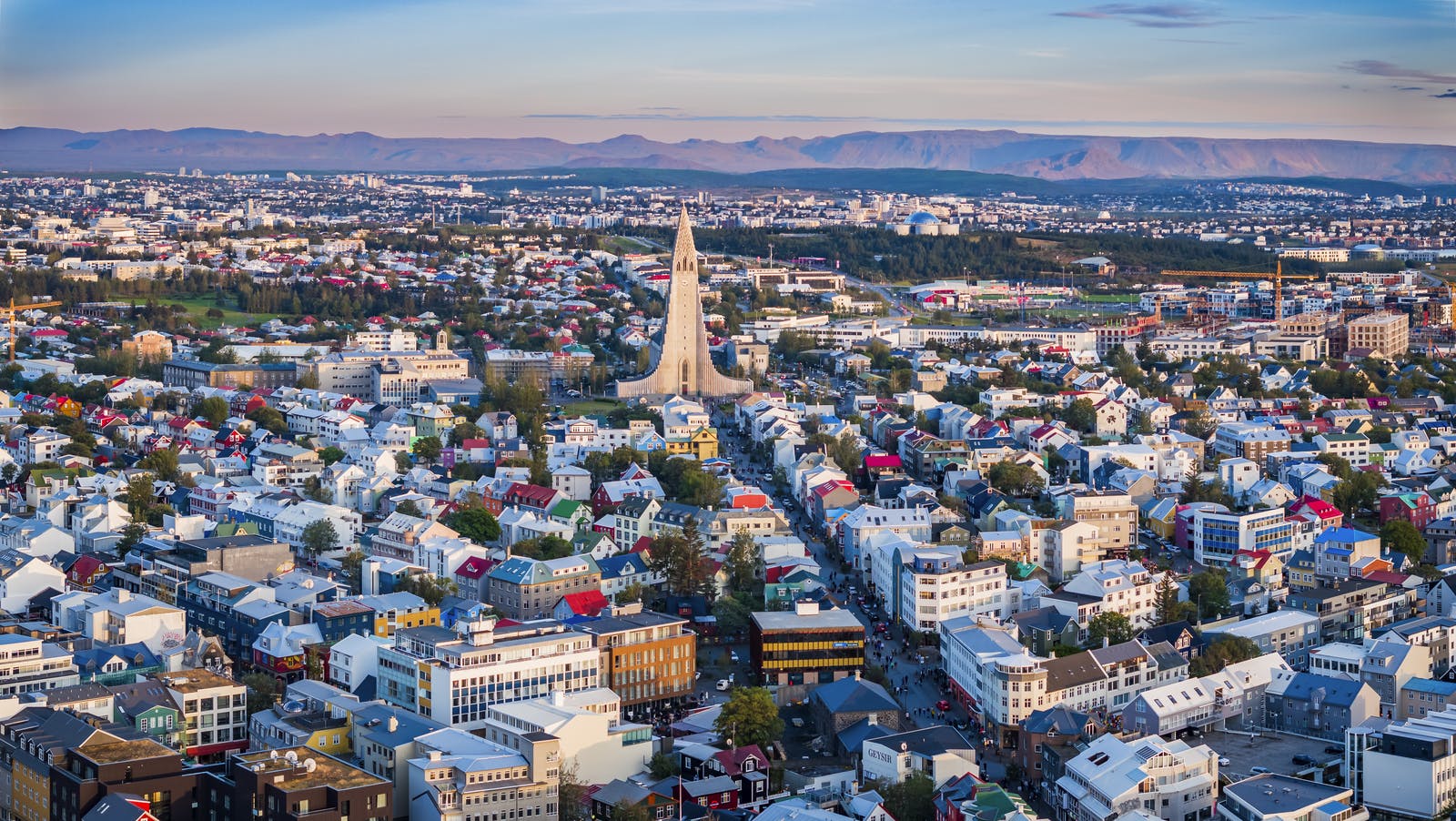
Things To Do In Reykjavík In June
Discover the best of Reykjavík in June: midnight sun adventures, vibrant festivals, and unique cultural experiences. Make your trip unforgettable!

The New Eruption May 29th 2024 near Reykjanes!
From rising magma at Svartsengi to an eruption on May 29th, 2024! See all updates of the volcanic activity on Iceland's Reykjanes Peninsula Sundhnúkur Crater Row.

Sundhnúkagígar Crater Row Volcanic Eruptions
The anticipated volcano has erupted in the Reykjanes Peninsula, the site is being called Sundhnúkagígar Crater Row. See the historic insights on the seismic activity and volcanic eruptions.

Earthquakes in Iceland
Earthquakes in Iceland are a fact of life. Each year, hundreds of small tremors shake the earth, a reminder of the country’s position on a tectonic plate boundary.

Volcano Museums and Exhibitions in Iceland
If you don't manage to visit an actively erupting volcano in Iceland - Experience its force at one of these excellent volcano museums and exhibitions in Iceland.

Top 10 Places To See the Northern Lights in Iceland
You can see the northern lights across the country, but some spots are more suitable than others. Find the best place to see the northern lights in Iceland.

Ice Caves From Reykjavik
Travel beyond the capital for a closer look at an ice cave under one of Iceland’s glaciers. If you can’t spare the time, experience Perlan’s ice cave in Reykjavik.